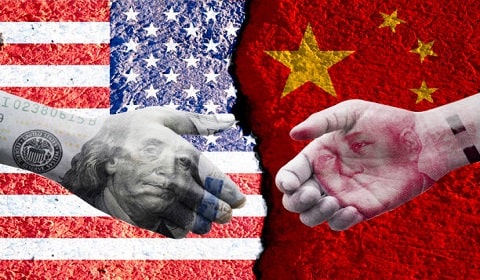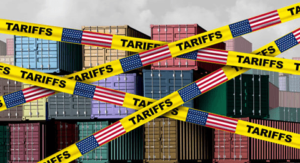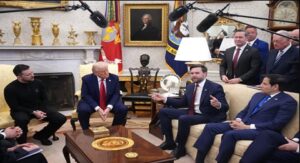
US-China Decarbonization Industrial Policies
US-China decarbonization industrial policies have emerged as a critical focal point amidst escalating climate concerns. China’s recent commitment to hasten its green transition, as unveiled during Premier Li Qiang’s address at the National People’s Congress, signals a pivotal shift towards sustainable development.
With a strategic emphasis on advancing clean-energy sectors such as solar panels, electric vehicles (EVs), and lithium batteries, China aims to pivot its economic growth trajectory. This proactive stance not only aligns with global decarbonization efforts but also underscores the role of place-based industrial policies in driving environmental sustainability.
As China escalates its investment in clean energy, it prompts reflections on its implications for global trade dynamics, particularly vis-à-vis the United States’ burgeoning initiatives in the sector.
US-China Decarbonization Industrial Policies
In recent years, the world has witnessed a surge in efforts to combat climate change, with nations prioritizing clean energy transitions. China’s announcement of accelerated investment in clean energy projects, as highlighted by Premier Li Qiang during the National People’s Congress, signals a significant move towards decarbonization.
This decision, particularly focusing on solar panels, electric vehicles (EVs), and lithium batteries, not only aims at economic growth but also carries implications for global trade dynamics, particularly between the United States and China.
The US-China decarbonization industrial policies are poised to shape the trajectory of this transition, influencing the development and adoption of renewable energy technologies on a global scale.
Table of Contents
1. China’s Bold Green Transition Announcement
Premier Li Qiang’s recent announcement during China’s National People’s Congress signaling an acceleration in clean-energy investment, including US-China decarbonization industrial policies, brings a glimmer of hope amidst concerning climate reports. The focus on industries like solar panels, electric vehicles (EVs), and lithium batteries signifies a strategic shift towards a greener economic model.
Read More: The Irony of American-Chinese Economic Relations
2. Global Momentum Towards Clean Energy
The global shift towards renewable energy, including initiatives such as US-China decarbonization industrial policies, is gaining momentum, with significant investments and commitments from major economies and corporations. International Energy Agency showcases a remarkable increase in renewable capacity additions, highlighting the growing consensus on the necessity of transitioning towards cleaner energy sources.
Read More: Green Hydrogen Development in Africa
3. Impact of China’s Investment
China’s decision to bolster spending in clean energy industries, along with US-China decarbonization industrial policies, has the potential to expedite the global transition to a low-carbon economy. By accelerating the adoption of renewable energy technologies, China aims to curb greenhouse gas emissions and achieve long-term climate goals.
Read More: China’s Economic Outlook
4. Place-based Industrial Policies and Decarbonization
China’s adoption of localized industrial strategies, along with the US-China decarbonization industrial policies, highlights their potential to support rather than hinder decarbonization. This unconventional approach challenges the belief that industrial policies obstruct environmental advancement. By focusing on place-based initiatives, China showcases a pathway where industrial development and sustainability can coexist, offering a paradigm shift in understanding the relationship between economic growth and environmental stewardship.
5. US Response and Protectionist Measures
The US government has implemented protective tariffs on key Chinese imports amidst China’s green-tech advancements and US-China decarbonization industrial policies. This move aims to safeguard domestic industries and support the Biden administration’s emphasis on bolstering domestic clean-energy manufacturing. By prioritizing the nation’s green economy, the administration seeks to ensure competitiveness and sustainability in the face of China’s surge in green technology.
6. Opportunities and Challenges for Developing Countries
China’s heightened focus on clean energy offers developing nations like India and African countries a chance to expedite their eco-friendly transitions. By embracing Chinese innovations and products, including those arising from US-China decarbonization industrial policies, they can bolster their own renewable energy sectors, stimulating job growth and facilitating the exchange of cutting-edge technologies. This collaboration not only addresses environmental challenges but also promotes sustainable development and economic advancement in regions striving for greener futures.
Read More: BRICS Blockchain-Based Payment System
7. Towards Fair and Free Trade of Green Goods
China, the US, and the EU must negotiate equitable terms for green goods trade, including considering US-China decarbonization industrial policies, to combat climate change effectively. Achieving net-zero emissions demands collaborative efforts despite balancing domestic industry concerns. It’s imperative to navigate this complex landscape with urgency, recognizing the need for fair agreements alongside climate action.
Bottom Line
China’s accelerated investment in clean energy represents a significant step towards decarbonization and sets the stage for enhanced international cooperation in addressing climate change. However, divergent industrial policies between the US and China pose challenges to global trade dynamics and necessitate efforts to reconcile differences in pursuit of shared environmental objectives.
Moving forward, fostering dialogue and collaboration between nations will be crucial in navigating the complexities of the clean energy transition and achieving a more sustainable future for all.







